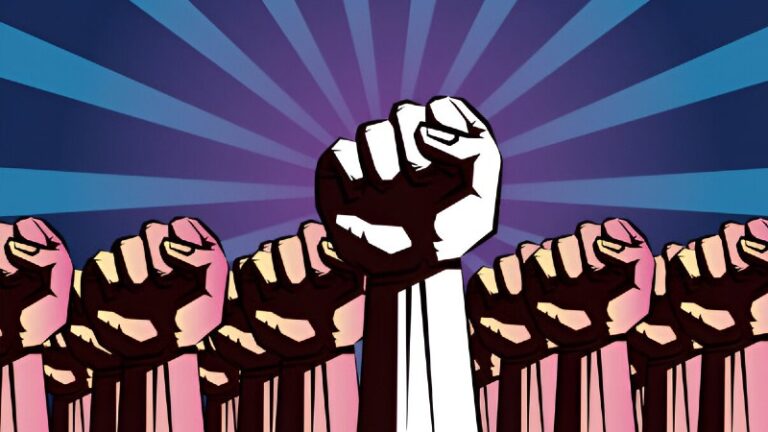Have you ever felt the raw power of a painting or sculpture, an urgency that transcends its beauty? Art isn’t just a reflection of society; it’s a profound interrogator, challenger, and often, a transformer of its times.
Artists have long used their craft to bridge divides and ignite emotions, acting as both historians and activists. From ancient criticisms of power to modern digital protests, artistic expression has amplified the voices of the oppressed and challenged the status quo. But how does art become a revolutionary act, offering a path forward beyond mere commentary? We’ll uncover a fresh perspective: art as a strategic sanctuary for subversive ideas, especially when explicit dissent is impossible.
Art as a Strategic Sanctuary for Subversive Ideas
While overt defiance in art often gets the spotlight, a crucial, often overlooked, aspect of art’s revolutionary power lies in its ability to serve as a strategic sanctuary for subversive ideas. In times of extreme upheaval and repression, artists developed ingenious visual languages using ambiguity, symbolism, and abstraction to embed messages that bypassed censors. This covert communication fostered revolutionary thought, empathy, and unity when open expression meant danger.
This isn’t just subtle critique it’s art creating a psychological and intellectual safe space. When fear grips society, art becomes a silent rallying point, a visual metaphor for shared discontent that unites people without uttering a single forbidden word. It offers a unique plausible deniability, allowing profound societal dialogue to continue beneath the surface, shaping collective consciousness from the shadows.
Encoding Revolution
Throughout history, artists have masterfully employed this strategic sanctuary tactic:
Renaissance Rebellion
Michelangelo’s David (1504), though a masterpiece of anatomy, quickly became a symbol of Florence’s republican resistance against the powerful Medici family. Placed publicly, its heroic stance resonated with democratic ideals, offering a powerful, yet symbolically layered, statement of defiance that authorities found hard to censor without revealing their own anxieties.
Abstract Expressions of Freedom
The mid-20th century saw political and social upheaval shape artistic expression through Abstract Expressionism. In the U.S. works by artists like Jackson Pollock and Mark Rothko, though seemingly apolitical, were championed as symbols of individual freedom contrasting with Eastern Bloc Socialist Realism. Crucially, their ambiguity allowed artists to grapple with universal anxieties war trauma, nuclear threat, existential dread without explicit political confrontation, fostering shared emotional experience and unspoken solidarity.
Behind the Iron Curtain, abstract art became a vital clandestine language. In countries like Poland and Hungary, artists used minimalist forms and optical illusions to subtly critique totalitarianism, preserving artistic freedom.
| Artistic Movement / Artist | Period / Upheaval | Strategic Sanctuary Manifestation |
| Michelangelo’s David | Renaissance Florence / Medici Rule | Symbol of civic resistance, publicly displayed with implicit political meaning. |
| Abstract Expressionism (US) | Post-WWII, Cold War anxieties | Expressed universal existential dread; avoided explicit political narrative to foster freedom. |
| Abstract Art (Eastern Europe) | Cold War / Soviet Control | Geometric forms and subtle illusions used to convey dissent, bypassing censorship. |
The Art of the Under spoken
Individual artists have also used subtlety to ignite change:
- Norman Lewis and the Civil Rights Movement: Lewis, an African American Abstract Expressionist, used abstraction to address racial injustice. His Processional (1965) used abstract forms to evoke marching figures, conveying collective power without literal depiction. This engaged viewers on a deeper, more emotional level, making the message universally impactful.
- Banksy’s Flower Thrower: This street art depicts a masked protester throwing flowers instead of a weapon. It’s a powerful juxtaposition of peace and defiance, advocating non-violent resistance without explicit slogans. Its public placement, often in conflict zones, acts as a spontaneous sanctuary for hope, influencing public dialogue on protest.
- Vik Muniz’s Pictures of Garbage: Collaborating with garbage pickers, Muniz transformed trash into stunning portraits. This subtly forced viewers to re-evaluate marginalized communities and materials, creating a space for empathy and dialogue around overlooked social and environmental issues.
The Digital Age
In our digital age, art as a strategic sanctuary continues to evolve. Digital abstract art, memes, and AI-generated visuals offer new, often ephemeral, spaces for coded commentary.
- Refik Anadol’s Data Sculptures: Anadol transforms vast datasets into immersive, abstract visualizations. His Melting Memories prompts contemplation on the overwhelming data deluge and its impact on human experience, subtly raising questions about privacy and surveillance without direct accusation.
- Petra Cortright’s Digital Paintings: Cortright’s abstract digital works reflect fragmented digital life, subtly commenting on consumerism and identity. Her art acts as a digital sanctuary, offering a visual counter-narrative to the curated online world, inviting users to question underlying digital structures.
These examples show the strategic sanctuary concept is dynamic, adapting to contemporary tools and challenges, offering new avenues for subtle yet profound artistic expression shaped by political and social upheaval.
Conclusion
The relationship between art and revolution is a continuous, dynamic dialogue. Art has consistently been at the forefront of societal evolution, especially when political and social upheaval shaped artistic expression. Its ability to serve as a strategic sanctuary for subversive ideas using ambiguity, symbolism, and abstraction to bypass censorship and foster collective consciousness is a testament to its enduring power.
From classical sculptures to digital canvases, art continues to inspire, inform, and influence societal progress, proving that sometimes, the most revolutionary statements are those spoken without a single explicit word. Understanding this intricate dance between creativity and societal forces is crucial to appreciating art’s profound impact on our past, present, and future.
Frequently Asked Questions (FAQs)
How does art influence social change?
Art influences social change by reflecting societal values, challenging norms, and providing a powerful medium for communication and emotional connection that can unite people and inspire action.
What role did art play in past revolutions?
In past revolutions, art served as a critical tool for expressing dissent, critiquing authority, and rallying support for movements, often becoming a symbol of resistance and a record of historical events.
Can abstract art be political?
Yes, abstract art can be highly political. Its non-representational nature can allow artists to convey complex emotions, critique regimes, or symbolize freedom and individuality in ways that avoid direct censorship.
How do artists respond to political upheaval?
Artists respond to political upheaval by creating works that express their views, document events, protest injustices, or offer hope, often using symbolism or innovative forms to communicate their messages.
What are some famous examples of protest art?
Famous examples include Picasso’s Guernica, Wedgwood’s Am I Not a Man and a Brother? medallion, Banksy’s Flower Thrower, and Keith Haring’s AIDS activism art.
How has technology impacted artistic expression in response to social issues?
Technology has broadened artistic expression by enabling new digital art forms, facilitating wider global dissemination of messages, and fostering new ways for artists to engage with social and political issues.
Why is it important to study art’s role in social movements?
Studying art’s role in social movements helps us understand historical contexts, develop critical thinking skills, cultivate empathy, and recognize the enduring power of creative expression to shape society.


